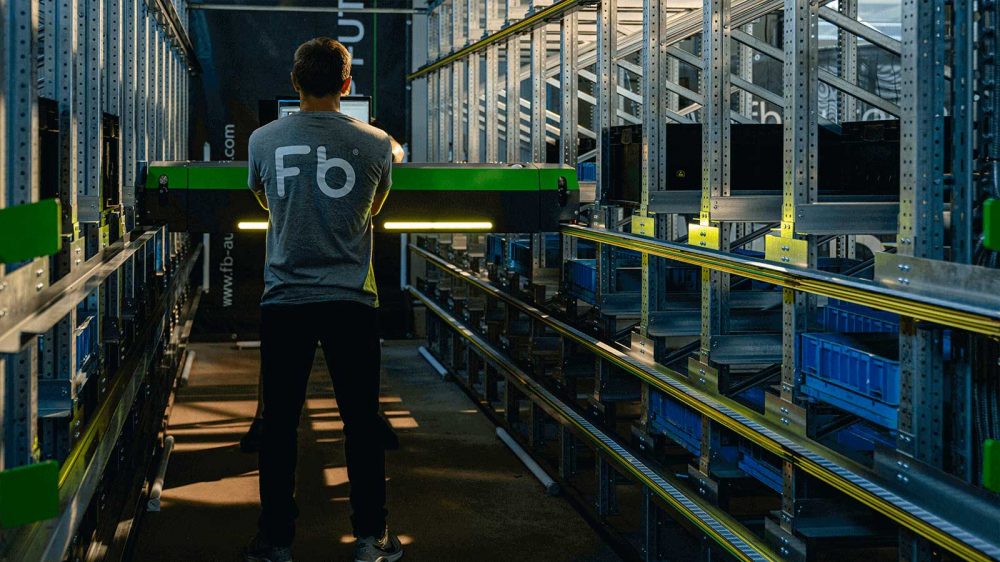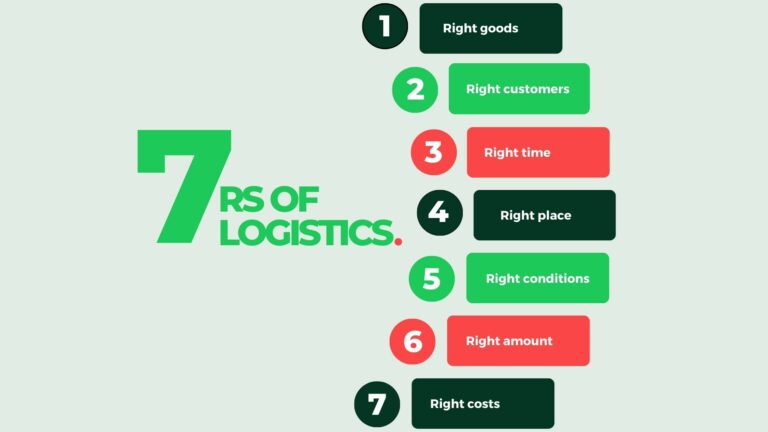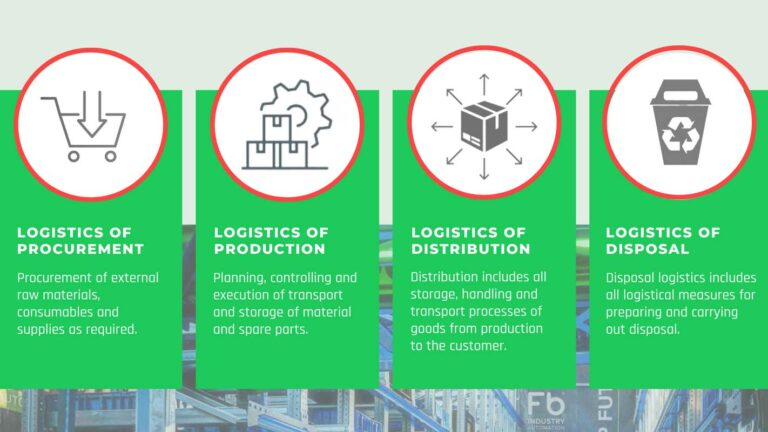INTRALOGISTICS AT A GLANCE.
The most important facts about warehouse logistics in general.
SUCCESS STORIES
EVERYTHING YOU NEED
TO KNOW ABOUT INTRALOGISTICS.
Intralogistics refers to all of the logistics processes and procedures undertaken within a company or an organisation. These include, among others, the internal planning, organisation, control and implementation of the various flows of materials and information. As an essential element of modern logistics, its relevance continues to grow as well.
This article will provide a detailed look at intralogistics and its importance for companies, the “7 Rs” principle of logistics, the various subsections and the key tasks covered undertaken by intralogistics.
Our team of experts is of course on hand to assist you in this regard. . Feel free to send us your queries at any time.

THE IMPORTANCE OF INTRALOGISTICS.
Intralogistics is a key element in an organisation’s value chain. As mentioned earlier, it relates to the various internal procedures and flows of materials. In performing these tasks, it makes a significant contribution to increasing both productivity as well as efficiency.
A properly functioning intralogistics system reduces corporate costs, improves product quality and shortens lead times. It can also have a meaningful impact on environmental pollution as well. As an example, optimising the internal transportation of goods reduces the environmental impact and ensures the use of resources can be maximised too. As a result, intralogistics is also incredibly important to a company’s competitiveness and success.
THE “7 RS” PRINCIPLE OF INTRALOGISTICS .
In order to satisfy customer demands, both intralogistics as well as logistics will generally employ the “7 Rs”. These are used as the basic principles to ensure effective and efficient logistics processes.
They are as follows:
- Getting the right goods
- At the right quantity
- In the right condition
- At the right time
- At the right place
- At the right price
- To the right customer
By following these principles, companies can ensure they are getting the right goods to the customer in the right quantity, in the right condition, at the right time, at the right place and at the right price. This helps to ensure customer satisfaction, cost efficiency and competitiveness.

THE SUBSECTIONS OF INTRALOGISTICS.
Intralogistics can be divided into subsections that fulfil the respective specific tasks. The four most important subsections are as follows:
Procurement logistics: procurement logistics refers to the planning and control of all of the processes associated with the procurement of resources. This includes managing supplier relationships, optimising ordering processes and monitoring lead times and delivery quality.
Production logistics: production logistics is responsible for optimising production processes as well as the storage of raw materials, intermediates, finished products and tools. It ensures that production runs smoothly and that all of the required materials are in the right place at the right time. Other tasks include optimising warehousing and order picking for the production process, along with the planning and control of internal flows of materials.
Distribution logistics: distribution logistics is responsible for the planning and control of flows of goods from the company to the customer. It manages the storage, order picking and dispatch of goods, ensuring the customer receives them promptly and reliably. This subsection also takes care of efforts to optimise delivery processes, quality and lead times
Disposal logistics: disposal logistics is tasked with the disposal of waste and packaging, along with accepting returns of goods and products. It plays a key role within organisations in fulfilling environmental requirements and reducing their environmental impact.

THE INTRALOGISTICS TASKS.
Intralogistics fulfils a variety of tasks aimed at improving internal logistics processes. These tasks range from the planning and control of flows of materials, right through to optimising order picking, warehousing, packaging and dispatch processes.
A key aim of intralogistics is to structure the logistics processes in the most efficient way possible and shorten lead times. This helps to reduce demand for resources and make companies more successful. Technologies, such as automated conveyor systems, storage and retrieval machines or pick-by-light systems, play a key role in this regard.
Intralogistics is also responsible for ensuring a high level of data quality and data integrity. This includes, for example, the implementation of it systems that enable full traceability of goods and products, thus constituting a key basis for compliance with quality and security standards. This includes, for example, the implementation of it systems that enable full traceability of goods and products, thus constituting a key basis for compliance with quality and security standards.
In addition to optimising logistics processes, intralogistics is also responsible for ensuring occupational health and safety and environmental protection measures. This includes, for example, compliance with requirements with regard to the storage and transportation of hazardous substances.
Intralogistics covers the following aspects:
- Planning and control of internal flows of materials.
- Optimising warehousing and order picking processes.
- Planning and control of transportation and delivery processes.
- Monitoring of lead times, data quality and delivery quality.
- Optimising processes and procedures.
- Reducing costs and avoiding errors.
- Taking occupational health and safety and environmental aspects into account.
In summary, intralogistics tasks range from planning to implementation, right through to the monitoring of internal logistics processes. They therefore make a key contribution to optimising operational processes and enhancing competitiveness.
SUMMARY – INTRALOGISTICS IN A NUTSHELL .
Overall, intralogistics is a key element of logistics and is hugely important to a company’s efficiency and competitiveness. Companies can become more efficient and enjoy market success by continuously optimising and fine-tuning their intralogistics processes in line with the latest requirements and challenges.
Do you have any other queries? Feel free to get in touch with us! We are on hand to help you at any time.
FURTHER CASES.
Sustainability for your intralogistics
Admittedly, change always sounds like a big challenge. But they are also opportunities for further development in a constantly changing market. But how can sustainability be implemented in your company? We show you simple ways in which we can modernize your systems and how artificial intelligence can simplify your processes.
Small, but powerful! Focus on intralogistics load carriers
Systematic coordination of staff and goods within intralogistics to make them a coherent unit comes with its fair share of challenges. Successful internal logistics requires implementation of a series of strategies and processes that make the transportation of goods within a company as efficient as possible.
Selection of the correct container system is of the utmost importance when ensuring things run smoothly. As a core element, it is the fundamental infrastructure for powerful, networked storage logistics.
Airbus trusts Fb Industry Automation with major order
For the new A321 XLR long-haul aircraft, Airbus is looking to automate production by using the innovative, flexibly scalable Fb Compact Warehouse (=automated small parts warehouse) from Fb Industry Automation. Manufacture of the rear fuselage in the new assembly hangar in Hamburg takes place with the customised automated small parts warehouse.
The Fb Compact Warehouse is flexibly scalable incl. upstream and downstream conveyor connections to incoming/outgoing goods as well as material flow control.